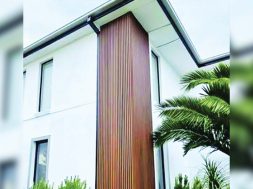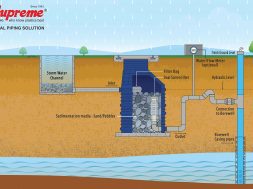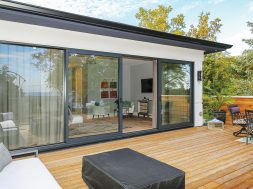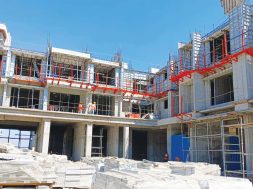Making existing structures green is a current priority

In January 2016, UN leaders enforced the Sustainable Development Goals (SDGs). These goals set a new challenge for all of us as they isolate economic growth from climate change. Many studies prove that building design affects the health and well-being of its inhabitants. Studies by the World Health Organisation also demonstrate that lung and respiratory diseases are associated with poor indoor environmental quality.
Natural light, greenery, and better air quality positively impact health and well-being. This makes us believe that green buildings will help us address this challenge, as they are more energy-efficient, sustainable, and have a lower carbon footprint.
As per Architect Carl Elefante, FAIA The greenest building isn’t necessarily the latest building, but The Greenest Building Is, One That Is Already Built. He also emphasised the importance of existing buildings, as only new construction will not get us to the level of green, sustainable construction. We must focus on renovating our existing facilities and converting them into green and sustainable ones.
Existing building structures not only have huge economic investments, but there are also many emotional, historical, and cultural values that buildings have for their inhabitants, neighborhoods, and communities which cannot be measured. This motivates us to find ways to make these existing structures sustainable and green.
We all know how to design new green buildings, but effectively dealing with older buildings is one of the biggest challenges in sustainable design.
According to a recent study, commercial and residential buildings consume approximately 29 percent of the world’s energy, with consumption increasing significantly yearly. Hence, to make existing structures sustainable, we need to increase the use of renewable energy sources, adjustable heating and ventilation systems, smart energy management solutions, and environmentally friendly waste management processes.
While transforming existing structures into green and sustainable structures, industry technophiles overlook the importance of waterproofing and continue to use traditional waterproofing solutions that are ineffective with modern construction technologies. Although waterproofing costs are less than 5 percent of the total project cost, but the performance of the remaining 95 percent depends on this 5 percent, as water is the leading cause of building decay and deterioration.
In the same regard, we would like to share our recent experience of transforming an existing industrial structure of HUL’s detergent division, into a sustainable green structure with the installation of a 1 MW solar power system. The solar panel installation was proposed on this site’s 122,000 sq ft PEB and RCC rooftop. The structure was facing severe issues with water leakages and corrosion as it is located in a core industrial area with salty and acidic fumes. We also met water leakage in multiple locations after installing solar panels. Initially, we tried many existing cost-effective solutions and chemicals, but all failed for various reasons. Finally, our client has recommended Elephant Shield liquid rubber, which they tried at one of their sites many years ago and saw promising results. It’s worth mentioning that after applying Elephant Shield liquid rubber, our team has never encountered any leakage issues.
Many technological advancements have been introduced in the waterproofing industry, and Elephant Shield liquid rubber is the result of such an advancement. Because it is non-toxic and VOC (volatile organic compound) free, ESLR is an eco-friendly, long-lasting, and safe product for human health and the environment. This also provides almost the same level of adhesion on multiple surfaces, distinguishing it from the other available products on the market.
High-quality green waterproofing solutions may initially cost a bit high. Still, with longevity and excellent performance over decades, this minimises utility and maintenance costs and ultimately ends up in savings for building owners. These sustainable solutions also empower our clients to reduce the environmental impact and increase ROI.
56
Cookie Consent
We use cookies to personalize your experience. By continuing to visit this website you agree to our Terms & Conditions, Privacy Policy and Cookie Policy.










